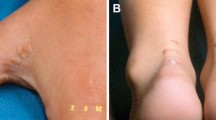Abstract
Summary. Homocystinuria due to cystathionine β-synthase deficiency is the second most treatable aminoacidopathy. The reported incidence varies from 1 in 344 000 worldwide to 1 in 65 000 in Ireland. Untreated patients with homocystinuria have severe hyperhomocysteinaemia. Amongst its pathological sequelae, which include mental retardation, ectopia lentis and osteoporosis, vascular events remain the major cause of morbidity and mortality in untreated patients. Recognized modalities of treatment include pyridoxine, in combination with folic acid and vitamin B12; methionine-restricted, cystine-supplemented diet; and betaine. The natural history of vascular events is such that half will have an event before age 30 years and there is a predicted one event per 25 years at the time of maximal risk. In 158 patients with 2822 patient-years of treatment, there would be a predicted 112 events if left untreated, but instead only 17 vascular events were recorded during treatment (relative risk 0.09, 95% CI 0.036 to 0.228; p<0.0001). Appropriate chronic treatment to lower hyperhomocysteinaemia is effective in reducing the potentially life-threatening vascular risk in patients with homocystinuria. These findings may also have relevance to the significance of mild hyperhomocysteinaemia that is commonly found in patients with premature vascular disease.
Similar content being viewed by others
REFERENCES
Butz LW, du Vigneaud V (1932) The formation of a homologue of cystine by the decompensation of methionine with sulphuric acid. J Biol Chem 99: 135-142.
Carson NAJ, Neill DW (1962) Metabolic abnormalities detected in a survey of mentally back-ward individuals in Northern Ireland. Arch Dis Child 37: 505-513.
Carson NAJ, Dent CE, Field CMB, Gaull GE (1965) Homocystinuria. Clinical and pathologi-cal review of ten cases. J Pediatr 66: 565-583.
Finkelstein JD, Mudd SH, Irreverre F, Laster L (1964) Homocystinuria due to cystathionine synthase deficiency: the mode of inheritence. Science 146: 785-787.
Gallagher PM, Ward P, Tan S, et al (1995) High frequency (71%) of cystathionine 3-synthase mutation G307S in Irish homocystinuria patients. Hum Mutat 6: 177-180.
Gerritsen T, Vaughn JG, Waisman HA (1962) The identification of homocystine in the urine. Biochem Biophys Res Commun 9: 493-496.
Komrower GM, Lambert AM, Cusworth DC, Westfall RG (1966) Dietary treatment of homocystinuria. Arch Dis Child 41: 666-671.
Kozich V, Kraus JP (1992) Screening for mutations by expressing patient cDNA segments in E. coli: homocystinuria due to cystathionine-synthase deficiency. Hum Mutat 1: 113-123.
Kraus JP (1994) Molecular basis of phenotype expression in homocystinuria. J Inherit Metab Dis 17: 383-390.
Kraus JP, Le K, Swaroop M, et al (1993) Human cystathionine-synthase cDNA: sequence, alternative splicing, and expression in cultured cells. Hum Mol Genet 2: 1633-1638.
Kraus JP, Janosick M, Kozich V, et al (1999) Cystathionine-synthase mutations in homocystinuria. Hum Mutat 13: 362-373.
McCully KS (1969) Vascular pathology of homocysteine: implications for pathogenesis of arteriosclerosis. Am J Pathol 56: 111-128.
McCully KS, Wilson RB (1975) Homocysteine theory of arteriosclerosis. Atherosclerosis 22: 215 227.
Mudd SH, Levy HL (1995) Plasma homocyst(e)ine or homocystine? (Letter). N Engl J Med 333: 325.
Mudd SH, Finkelstein JD, Irreverre F, Laster L (1964) Homocystinuria: an enzymatic defect. Science 143: 1443-1445.
Mudd SH, Skovby F, Levy HL, et al (1985) The natural history of homocystinuria due to cystathionine-synthase deficiency. Am J Hum Genet 37: 1-31.
Mudd SH, Levy HL, Skovby F (1995) Disorders of transsulfuration. In: Scriver CR, Baeudet AL, Sly WS, Valle D, eds. The Metabolic and Molecular Bases of Inherited Disease, 7th edn. New York: McGraw-Hill, 1279-1327.
Mudd SH, Finkelstein JD, Refsum H, et al (2000) Homocysteine and its disulphide derivatives. A suggested consensus terminology. Arterioscler Thromb Vasc Biol 20: 1704-1706.
Munke M, Kraus JP, Ohura T, Franke U (1988) The gene for cystathionine P-synthase (CPS) maps to the subtelomeric region on human chromosome 21q and to proximal mouse chromo-some 17. Am J Hum Genet 42: 550-559.
Naughten ER, Yap S, Mayne PD (1998) Newborn screening for homocystinuria: Irish and worldwide experience. Eur J Pediatr 157 (supplement 2): S84-87.
Perry TL, Dunn HG, Hansen S, MacDougall L, Warrington PD (1966) Early diagnosis and treatment of homocystinuria. Pediatrics 37: 502-505.
Schimke RN, McKusick VA, Huang T, Pollack AD (1965) Homocystinuria. Studies of 20 families with 38 affected members. JAMA 193: 711-719.
Skovby F, Krassikoff N, Franke U (1984) Assignment of the gene for cystathionine P-synthase to human chromosome 21 in somatic cell hybrids. Hum Genet 65: 291-294.
Wilcken DEL, Wilcken B (1997) The natural history of vascular disease in homocystinuria and effects of treatment. J Inherit Metab Dis 20: 295-300.
Wilcken DEL, Dudman NPB, Tyrrell PA (1985) Homocystinuria due to cystathionine P-synthase deficiency the effects of betaine treatment in pyridoxine-responsive patients. Metabolism 34: 1115-1121.
Yap S, Naughten E (1998) Homocystinuria due to cystathionine-synthase deficiency in Ireland: 25 years' experience of a newborn screened and treated population with reference to clinical outcome and biochemical control. J Inherit Metab Dis 21: 738-747.
Yap S, O'Donnell KA, O'Neill C, Naughten ER (1999) Factor V Leiden (Arg506Gln), a con-founding genetic risk factor but not mandatory for the occurrence of venous thrombo-embolism in homozygotes and obligate heterozygotes for cystathionine-synthase deficiency. Thromb Haemost 81: 502-505.
Yap S, Naughten ER, Wilcken B, Wilcken DEL, Boers GH (2000) Vascular complications of severe hyperhomocysteinaemia in patients with homocystinuria due to cystathionine P-synthase deficiency: effects of homocysteine-lowering therapy. Semin Thromb Hemost 26: 335 340.
Yap S, Boers GHJ, Wilcken B et al (2001) Vascular outcome in patients with homocystinuria due to cystathionine-synthase deficiency treated chronically: a multicentre observational study. Arterioscler Thromb Vasc Biol 21: 2080-2085.
Author information
Authors and Affiliations
Rights and permissions
About this article
Cite this article
Yap, S. Classical homocystinuria: Vascular risk and its prevention. J Inherit Metab Dis 26, 259–265 (2003). https://doi.org/10.1023/A:1024497419821
Issue Date:
DOI: https://doi.org/10.1023/A:1024497419821




